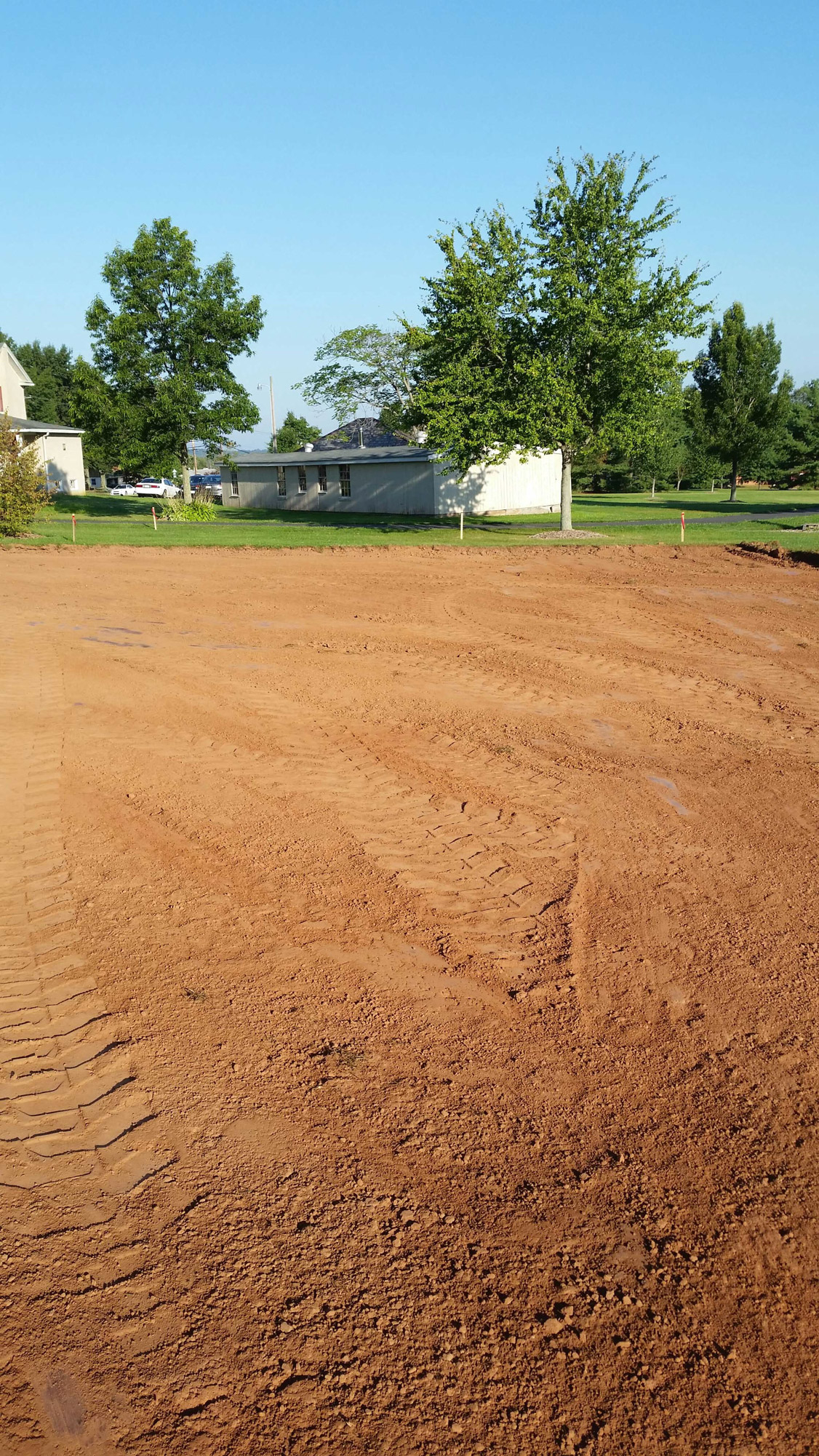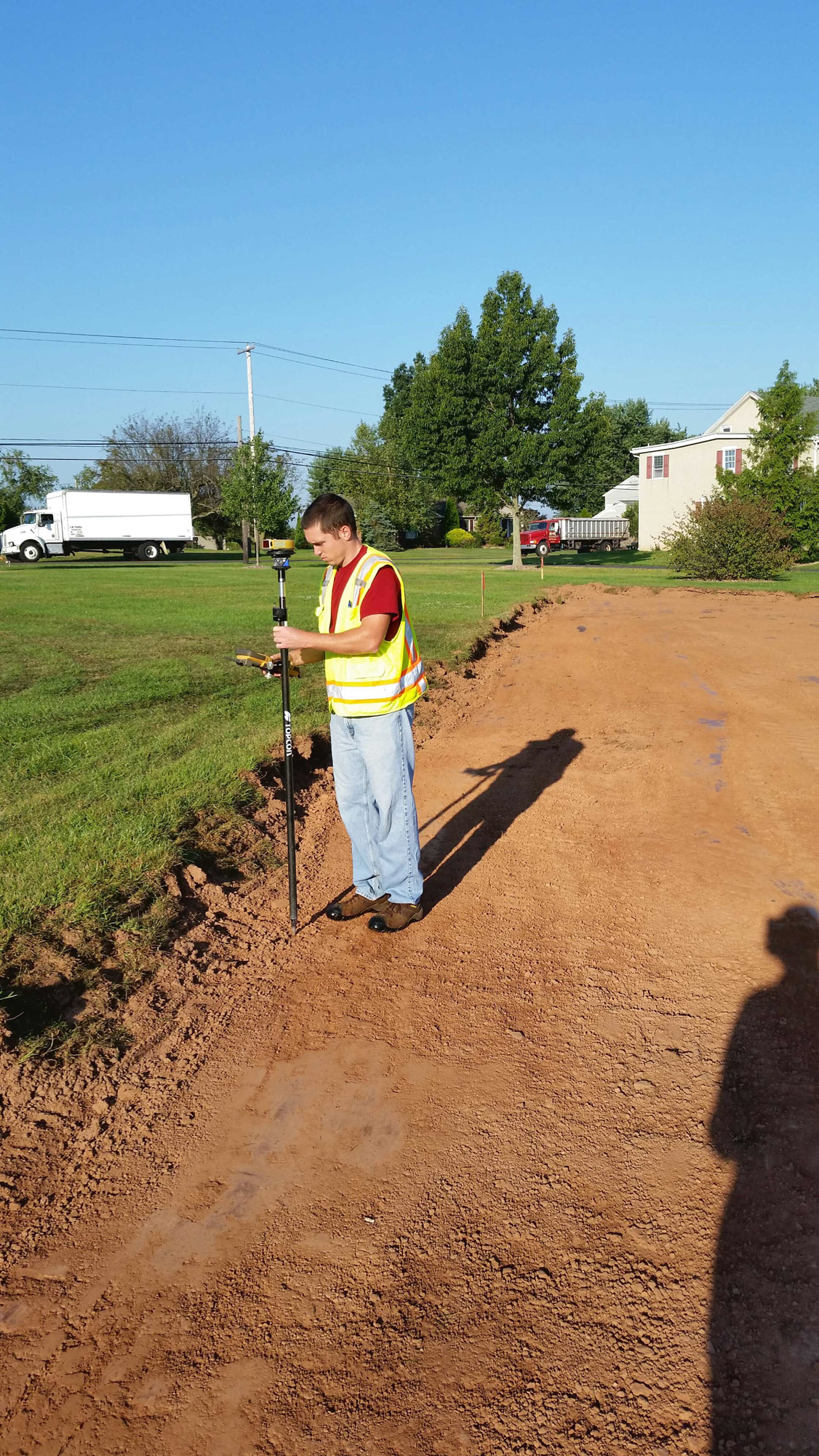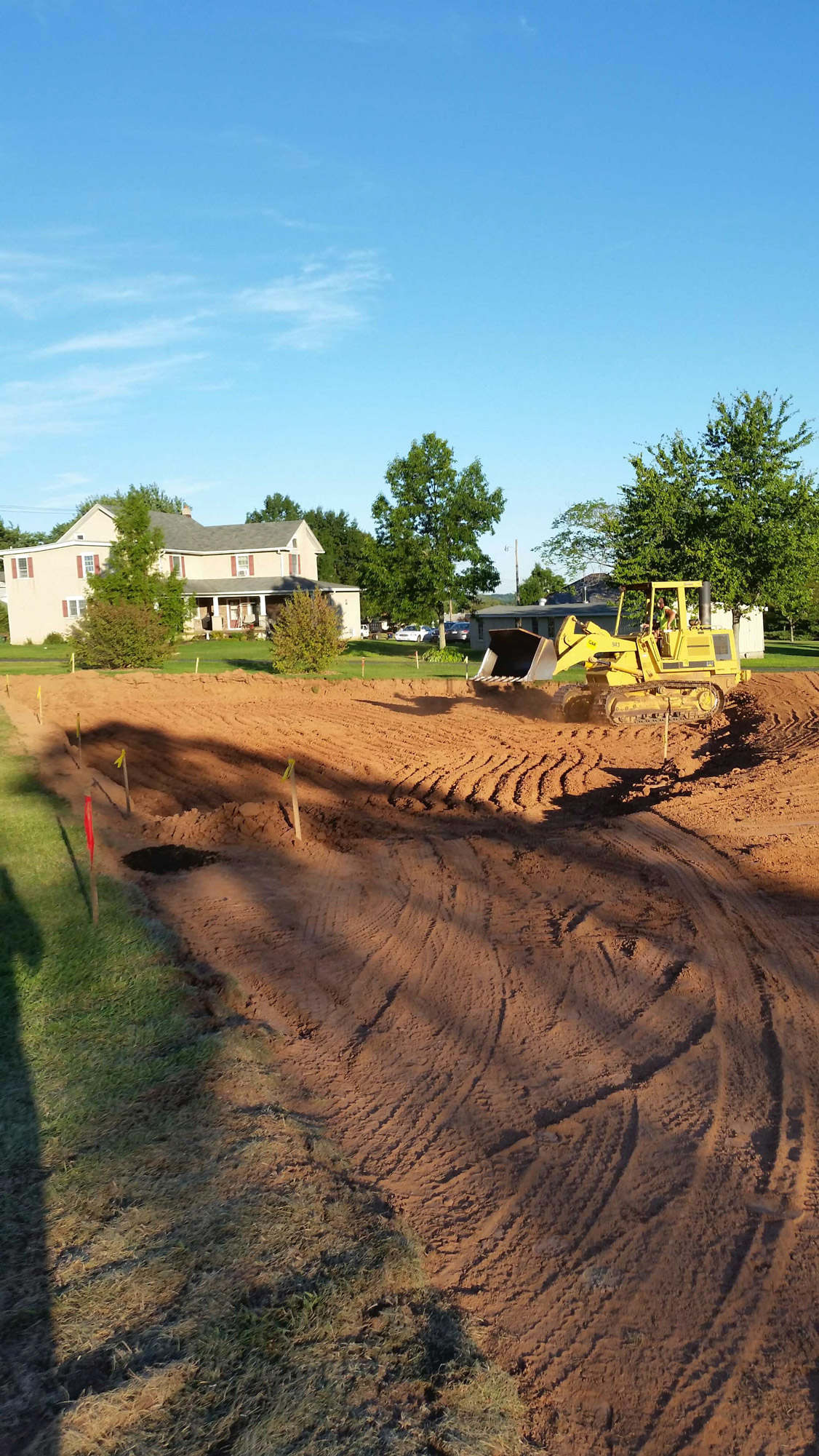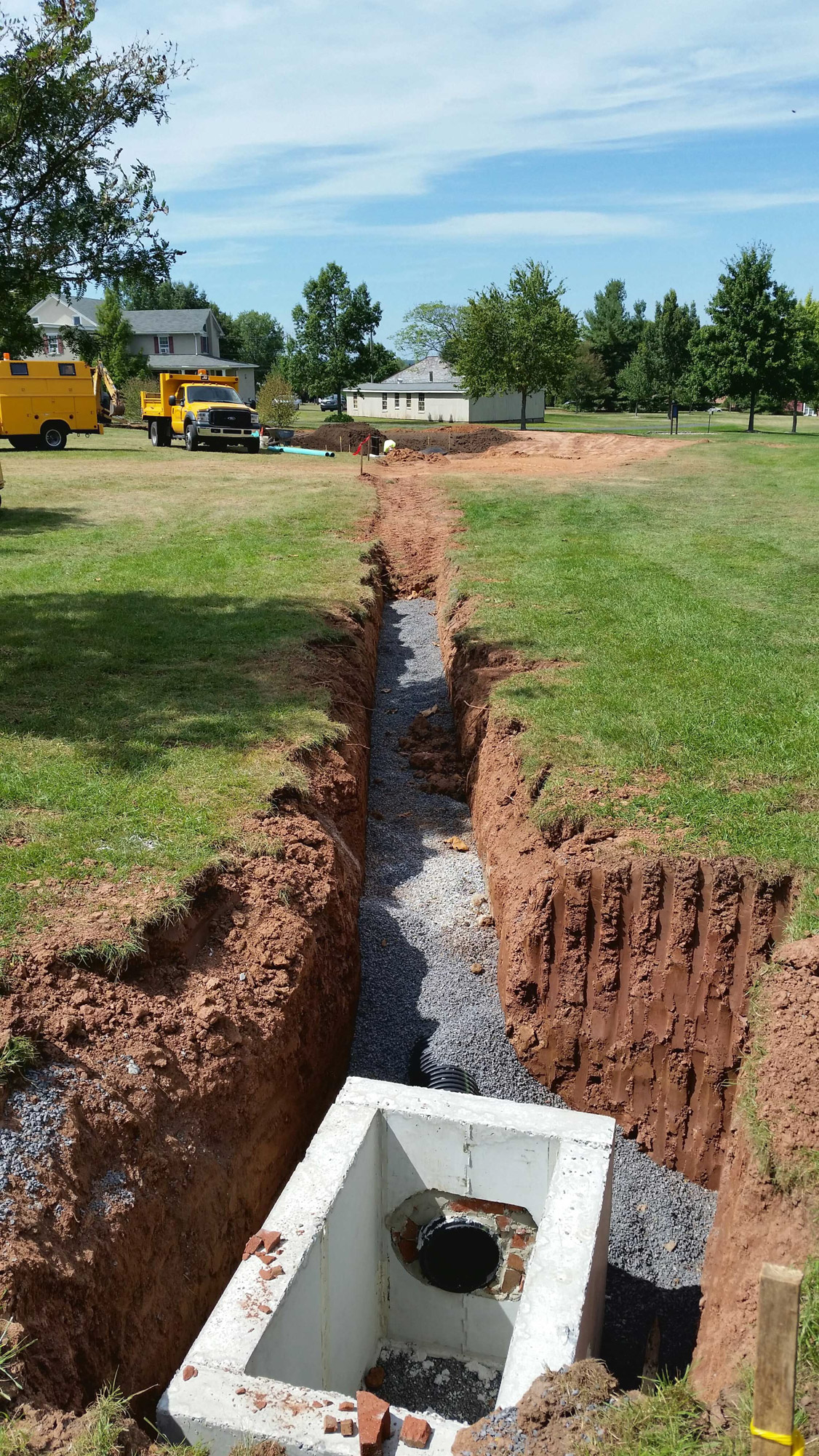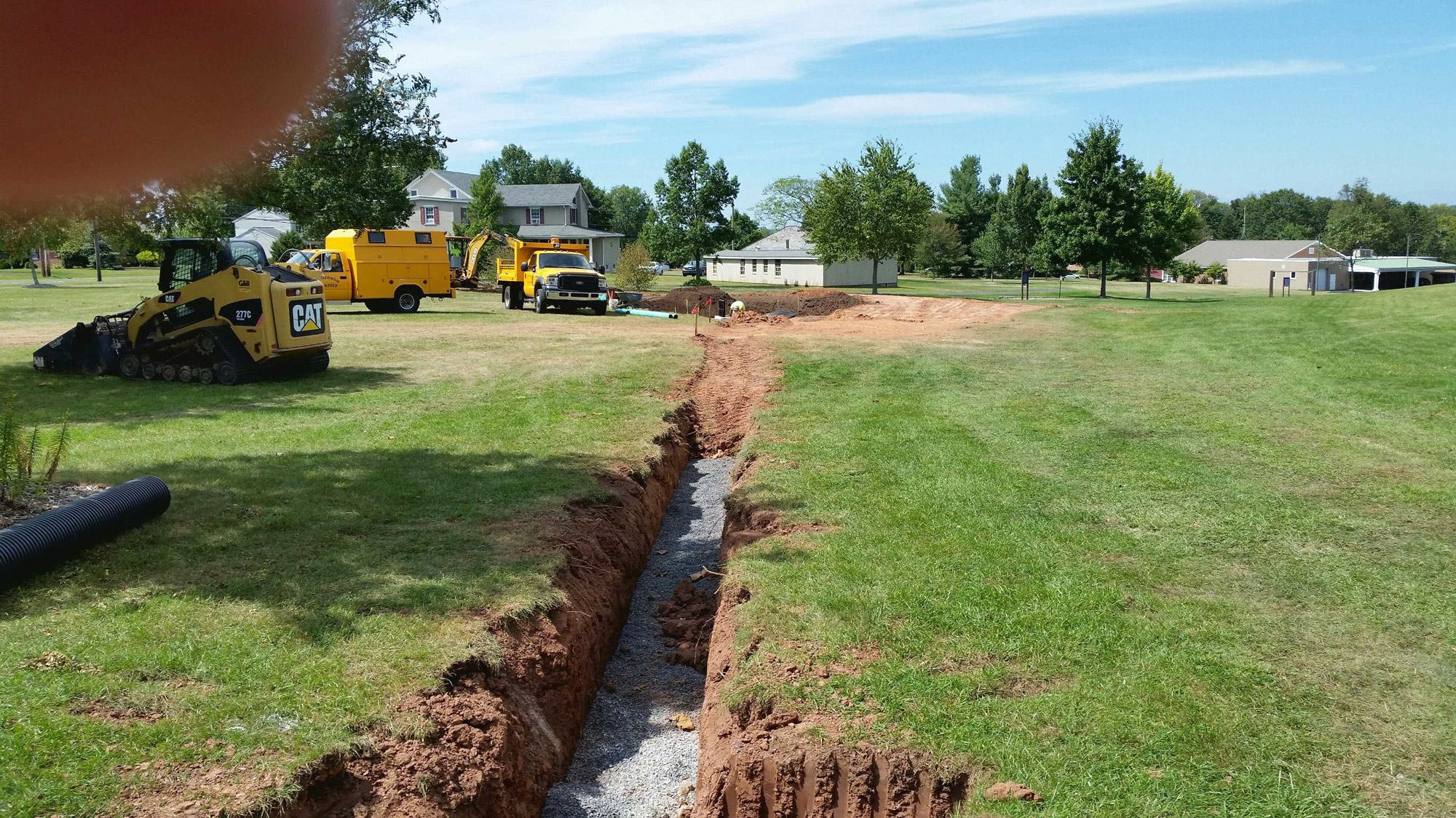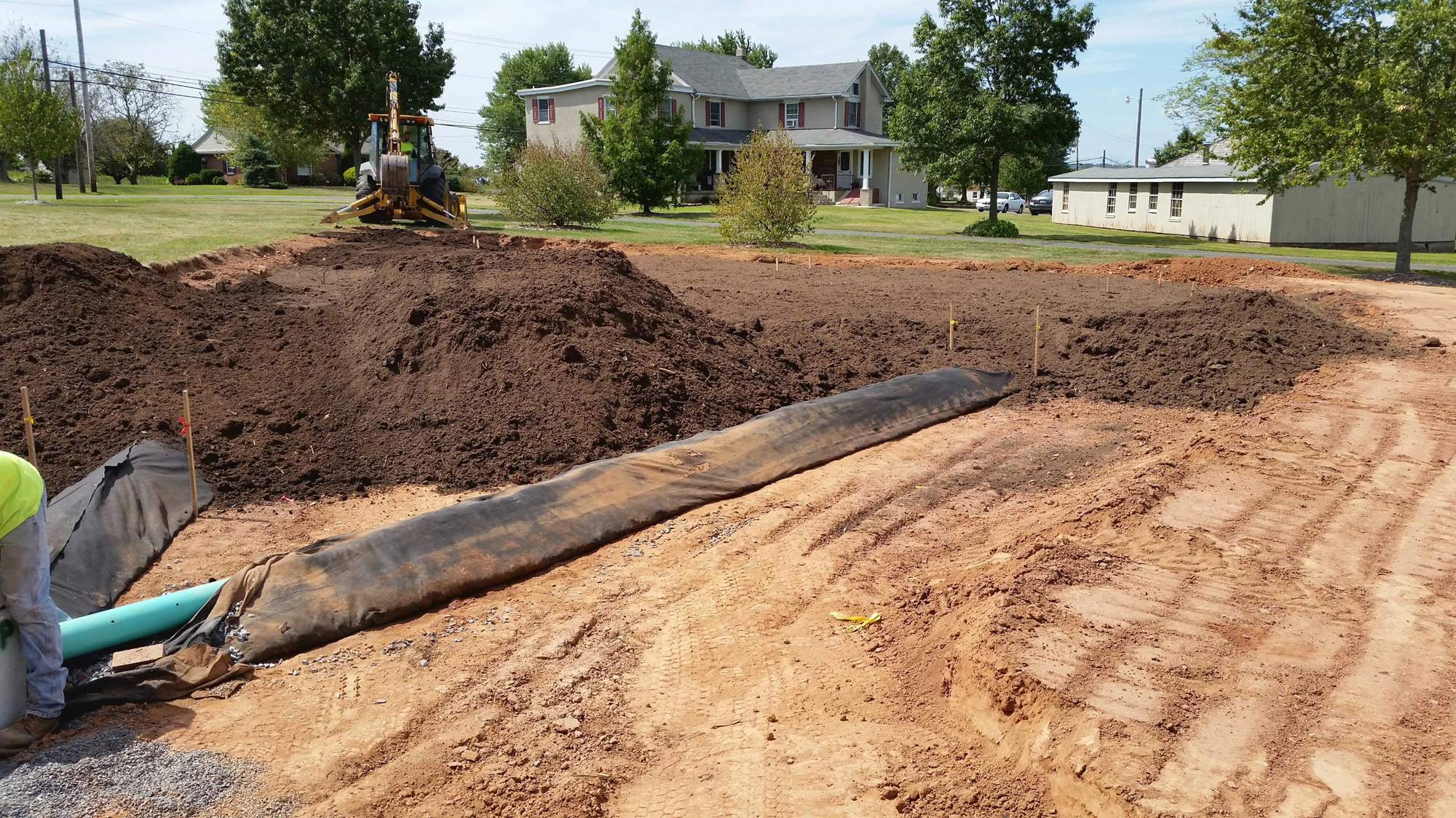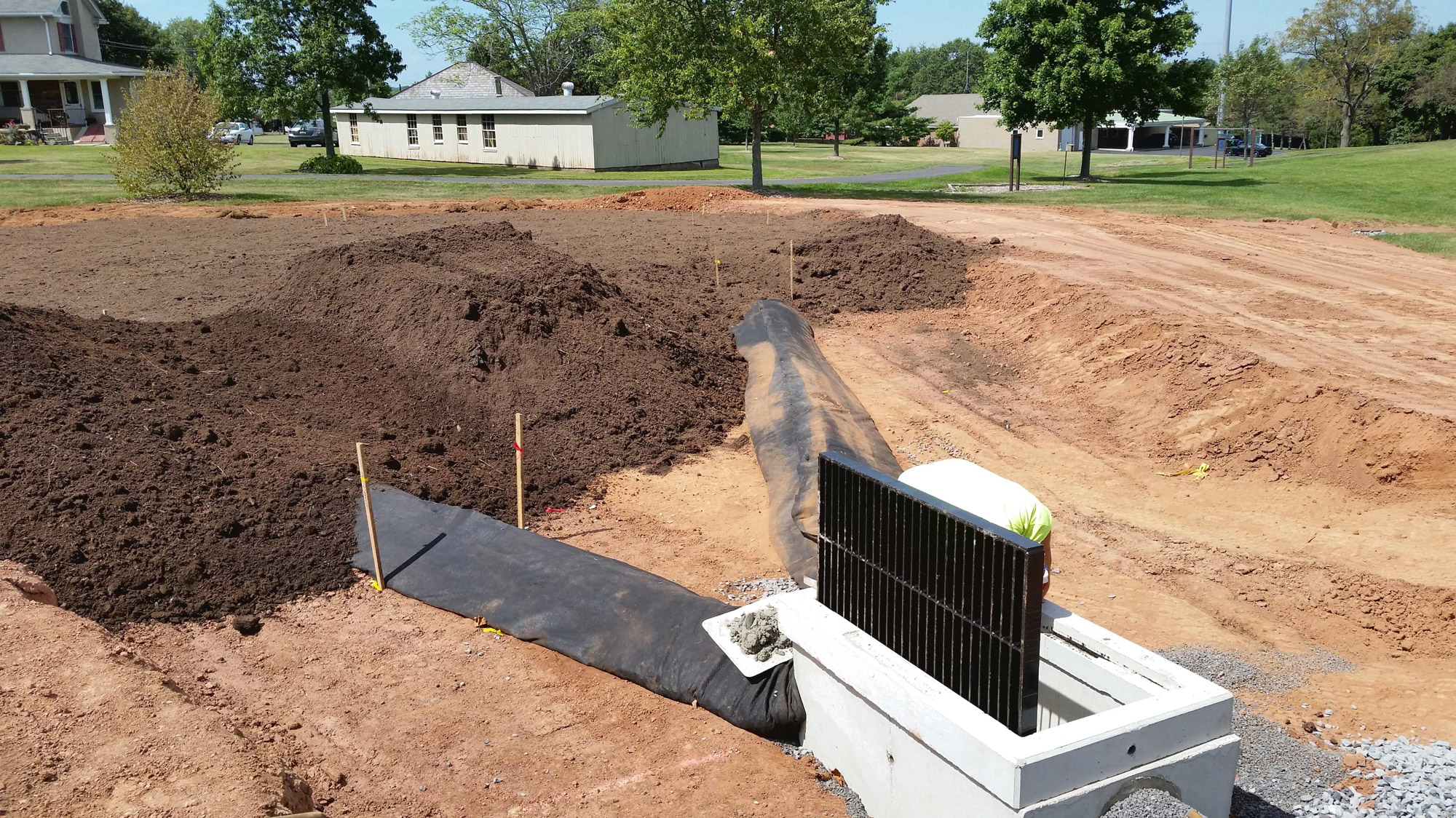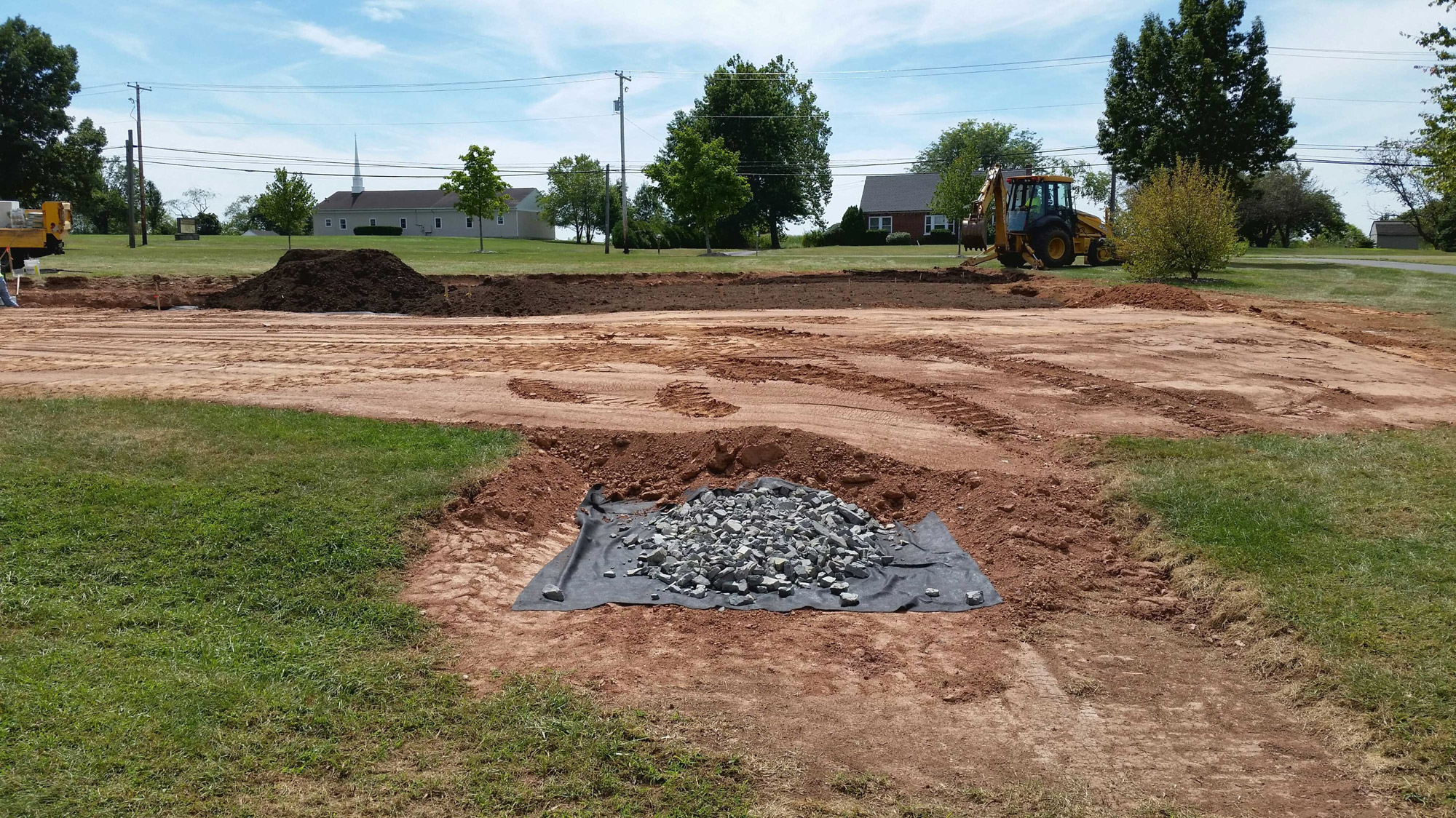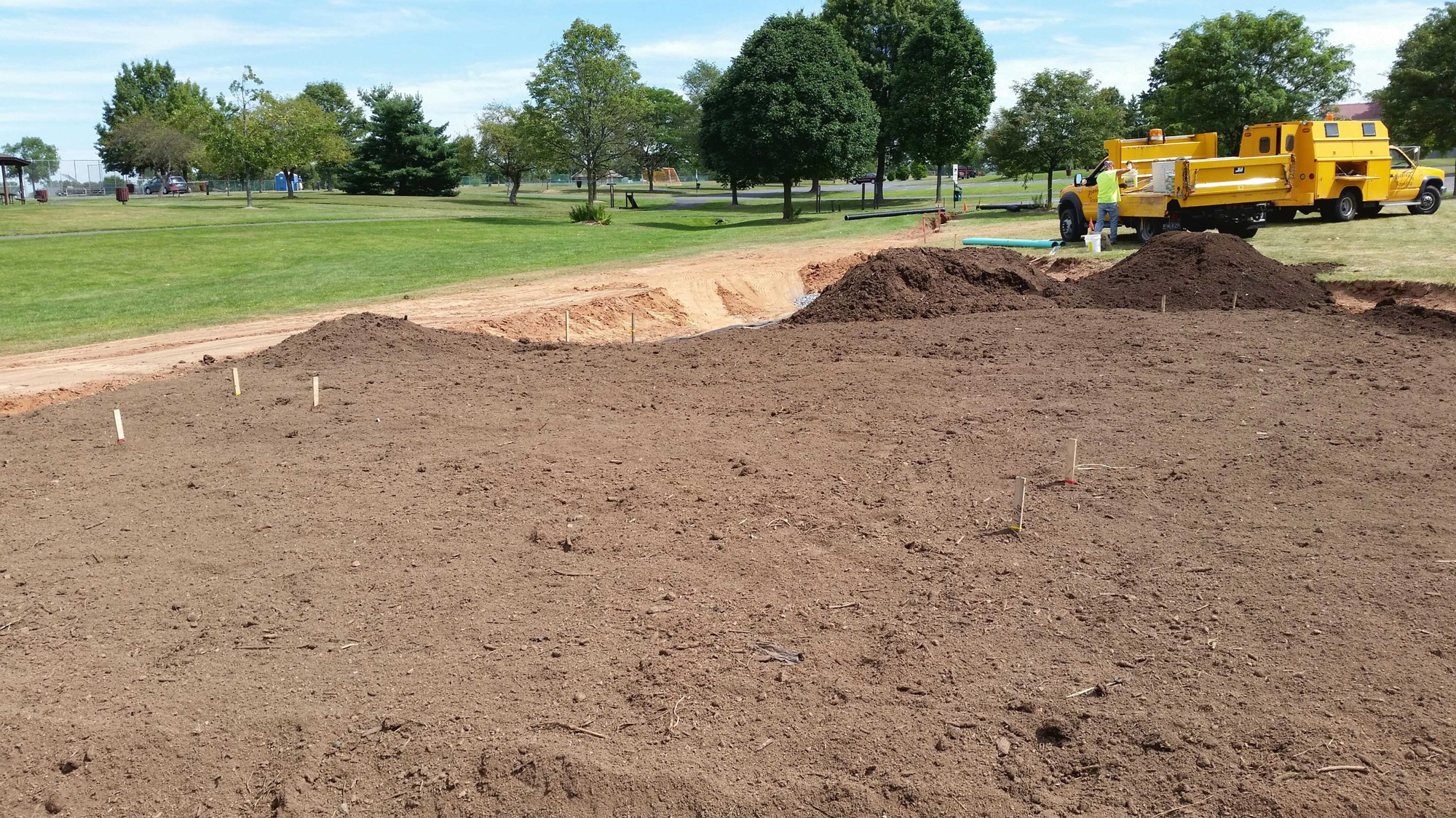Stormwater Management
STORMWATER MANAGEMENT- TMDL STRATEGY PLAN
Franconia Township is required to file a strategy plan that addresses how the Township intends on reducing the amount of sediment in the impaired Skippack Creek and Indian Creek, with measurable results within the next five years. The Township's MS4 Committee has worked closely with the Township Engineers to develop a plan that they believe will accomplish a reduction in the sediment level and satisfy the requirements of the PA Department of Environmental Protection (PADEP) and the U.S. Environmental Protection Agency (EPA). The plans can be viewed by clicking here or by stopping into the office and requesting to review the document.
ENOS B. GODSHALL POND TO BIORETENTION FACILITY CONVERSION
This project rehabilitated an existing pond. The facility provides an overflow for the adjacent stream for higher flow events to provide floor relief for downstream areas. Due to concerns about mosquito habitat and algae, the pond was drained, a forebay (or depression to allow sediment to settle out) added, and the remaining area was supplemented with amended soils and native vegetation to help with filtering of pollutants and water quality. Bioretention means the facility mimics nature by utilizing woody and herbaceous plants and soils to remove pollutants before infiltration occurs.
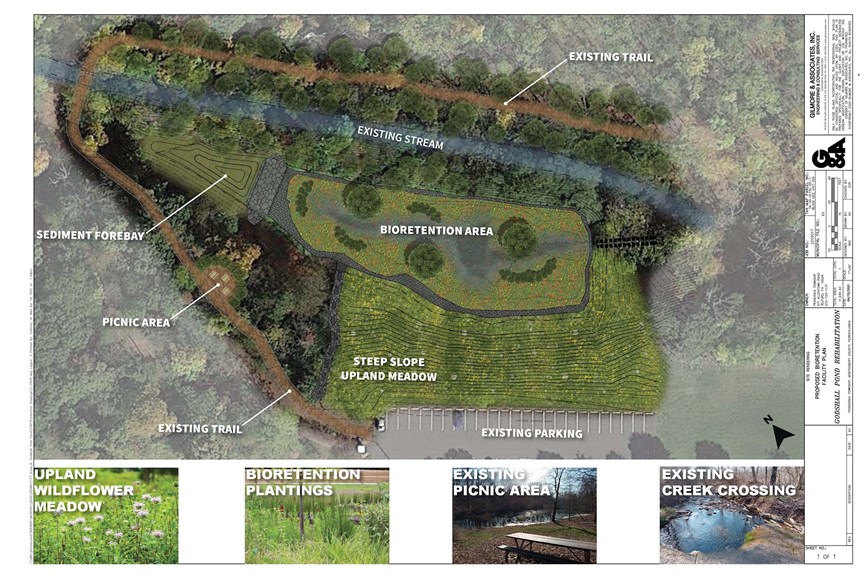
FRANCONIA COMMUNITY PARK RAIN GARDEN PROJECT
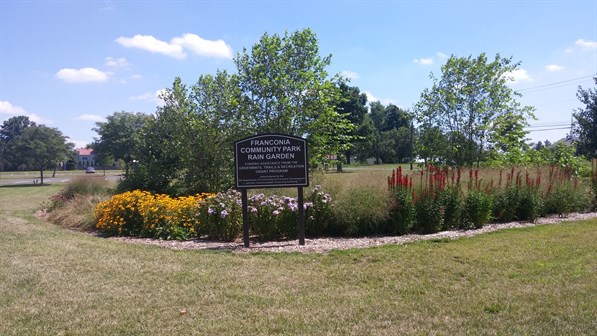
The Franconia Township Public Works Department completed the installation of a rain garden in Franconia Community Park summer of 2015. The rain garden project was selected for grant funding through the Pennsylvania Department of Community and Economic Development. It provides both a mechanism for managing stormwater runoff and providing information to the park patrons about the benefits of rain gardens. Click here to read more about the project. The final plantings were added and the signage is the last step in the completion of the project.
Rain Garden Construction Photographs
Perkiomen Watershed Conservancy
For more information on Perkiomen Watershed Conservancy, go to their website at https://perkiomenwatershed.org
Help Us Manage Stormwater Pollution
Stormwater Ordinance Status: Franconia Township updated its Stormwater Ordinance when it enacted Ordinance 377 on August 18, 2014. This Ordinance was an update to the original Ordinance approved in 2005. Ordinance #377 implements provisions of the "Neshaminy Creek Watershed Act 167 Stormwater Management Plan" in accordance with PA Act 167. It sets forth new and amends prior definitions, stormwater management regulations for water quality and quantity, Stormwater Best Management Practice (BMP) operations and maintenance requirements, inspections and right of entry regulations, fees and expenses, prohibited activities, and the enforcement of the Ordinance and penalties for violations.
What is storm water?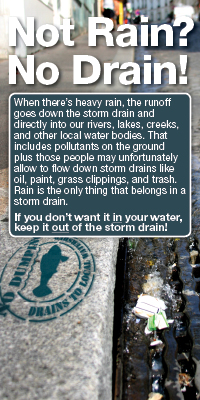
When it rains or snows, all of that precipitation either travels over the land or seeps into the ground. The water that runs over the land and gets into the storm sewer system is called stormwater runoff. This water then goes directly into our nearby creeks, rivers, and lakes.
What’s the problem?
As this water flows over the ground and through the streets, it washes debris, chemicals and other pollutants into our creeks. The runoff, along with everything it collects on the way, never gets treated. To see two common ways you may be unknowingly contributing to stormwater pollution, click here. Very expensive treatment technologies are required to remove these harmful pollutants from our drinking water. In addition, excessive debris can clog inlets causing flooding and property damage.
Ways for You to Prevent Stormwater Pollution
- Properly dispose of hazardous substances such as oil, cleaning supplies, and paint. Never pour them into the storm sewer system.
- Properly and efficiently use pesticides, fertilizers, and herbicides to prevent excess amounts into runoff.
- Report any signs of soil or other debris washing out of construction sites that could impact water quality.
- Pick up after pets and dispose of their wastes in the toilet or trash can.
- Install innovative storm water practices on residential property such as rain barrels or rain gardens.
- Report any discharges from storm system outfalls during times of dry weather – a sign that there could be a problem with the system.
How do we fix it?
Franconia Township, in conjunction with the Pennsylvania Department of Environmental Protection (DEP), is currently taking steps to prevent stormwater pollution through a federally mandated program that better manages stormwater. The 5-year NPDES (National Pollution Discharge Elimination System) Program will reduce the pollution by identifying sources of contamination in our community and get the entire township involved in making sure our water stays clean for drinking, recreation and wildlife! Please do your part and help us manage stormwater pollution.
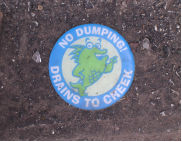
*Any illicit discharge as defined in the newly-adopted Ordinance is a violation of the Code, and those who dump will be guilty of a misdemeanor and subject to a fine. Please call the Stormwater Hotline to report illicit discharges or anything that might pollute our streams at 215-723-1137!
To report an environmental emergency call:
Pennsylvania Department of Environmental Protection Hotline: 484-250-5900,
Franconia Township Police 215-723-6778,
Township Office 215-723-1137
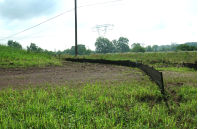 Single-Family Construction
Single-Family Construction
Are you planning construction on your property? Franconia Township is taking measures to increase awareness of construction impacts on our water resources. All projects that will clear, grade, or disturb a site must install erosion and sediment controls. The sediment from construction sites must be trapped and prevented from leaving the site and getting into our storm sewer systems and creeks. Not only do our water resources need to be protected, but without these controls, properties downstream can be affected when stormwater carries the sediment down slope.
Use a Silt Fence
If the proper erosion control techniques are used, water quality will be improved and flooding will be reduced. Common control measures include silt fence, hydro-seeding, straw, and vegetation. Please contact the township with any questions or for more information on erosion and sediment control and stabilized measures to keep our waterways clean.
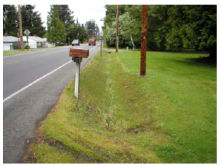 Don’t Ditch the Ditch!
Don’t Ditch the Ditch!
After it rains, stormwater runoff travels over the roads collecting debris and pollutants. The sediment, fertilizers, pet waste, oil and grease, etc. that can get into the water, quickly flow into the storm sewer where they get discharged directly into our creeks without ever being treated! The consequences of this can include odorous, unsightly algal blooms, illness from bacteria, harm to our aquatic life, and expensive laboratory testing.
Ditches, the environmentally sensitive alternative, filter out some of these pollutants and infiltrate the runoff back into our groundwater. Compared to stormwater pipe, ditches provide more capacity to convey stormwater runoff and their pervious nature slows down the velocity to allow the water to be absorbed by plants and soil.
To help increase water quality and offset negative stormwater impacts, protect and preserve these low maintenance ditches!
You can also check out this link for more informational articles on stormwater management.
For links to the EPA literature on stormwater pollution prevention, please click on the following links:
For more information please visit the following EPA websites:
Documents
- STORMWATER Small Stream 20131001154907
- Value of Streamside Trees by Stroud Water Research Center
- Twp Today Newsletter Fall 2013 LO
- USGS Phosphorus And Groundwater Establishing Links Between Agricultural Use And Transport To Streams
- Business Guide To Stormwater Management
- Household Waste Chart
- Source Water Protection Article 2014
- STORMWATER ARTICLE CBF 20131001154749
-
Ordinance #377
Updated requirements for the Neshaminy Watershed
- 2020 10 07 FT TMDL PRP PLAN
- 2022-2023 FT ANNUAL MS4 STATUS REPORT
- 2023-2024 FT ANNUAL MS4 STATUS REPORT
- Ordinance 377 Neshaminy Creek
Other Links:
- Center for Watershed Protection
- www.perkiomenwatershed.org
- Rain Gardens
- Polluted Runoff- Everybody's Business
- Partnership for the Delaware Estuary
- EPA Nonpoint Source Outreach Toolbox
- Pennsylvania Environmental Council
- Montgomery County Conservation District
TEN THINGS I CAN DO TO HELP PROTECT MY WATER
- Pick up after your pets and keep livestock out of streams.
Pet and animal wastes can carry harmful bacteria and diseases. They contaminate creeks and require expensive water treatment for human uses. - Never dump anything down a stormdrain!
Stormwater systems do not filter pollutants from stormwater so anything that goes down the stormdrain will end up in the nearest creek. - Maintain open, forested floodplains.
Floodplains are critical landforms that absorb water during floods and act as giant filters the rest of the time. Filling or paving them increases flooding and pollution elsewhere. - Plant trees and maintain naturally vegetated streamside buffers.
Streamside trees and native vegetation help filter pollutants from stormwater run-off and reduce erosion by holding streambank soils in place. - Convert large yards or public spaces from mown grass to meadows.
The typical suburban lawn is nearly as impervious as a parking lot! Native meadow grasses infiltrate stormwater better and provide critical habitat for grassland birds. - Cut back on lawn fertilizers and pesticides.
Much of the fertilizer applied in the spring flows directly into the local creeks because the grass is not ready to absorb it. Use a mulching mower set at 3 inches to create a healthy, organic lawn. Fertilize only in the fall! - Disconnect your downspout from the storm drain.
Rainwater from your roof is just as damaging to creeks and streams as run-off from a parking lot. Let your yard help filter out impurities and infiltrate stormwater back into your aquifer. - Convert a corner of your yard to a rain garden.
A wet area in your yard can be a nuisance or an amenity, depending on how it's managed. Use native plants that like occasional "wet feet' and create a focal point. - Keep your paved surfaces to a minimum.
Patios and parking spaces can be created with attractive pervious materials that allow stormwater infiltration to the soils below. - Maintain your septic tank.
Septic tank maintenance isn't sexy but with thousands of on-lot septic systems in our communities, proper maintenance is critical to protecting groundwater and surface water from contamination.
